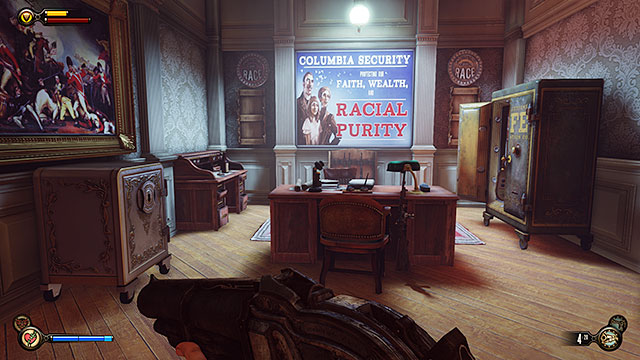Yes, product placement. Let’s try to paint the picture. You’re watching a movie or a soap opera, and then a brand is just in the background or the main actor is interacting with a known product. This is product placement. Although this strategy is mainly related to advertising purposes, game designers could learn a lot from it. I can tell you how.
When dealing with camera movements in your game, you have to think what are the things that you want people to see. What do you want your player to see and why this is important?
Product placement can happen in different ways. First, it could be done in the background, as “passive” object or in the central of the screen, as “active” object. When thinking about camera, it’s like some products are far from our point of view, but the way the camera is positioned it is still possible to see the brand. In that case, the camera is placed strategically in order to show the features of the product.
See the example of the Wilson with Tom Hanks in the movie Cast Away. In that case, the “wilson” has a strong presence and influence in the movie.
In a game, this could be very similar to the objects that you have to collect in order to succeed in the game. It could be the same way as looking as objects in the game and finding the necessary items in order to progress in the game.

Another way to see placements is in the background.Of course, you need to be careful. If you fail on giving a more “natural” way to see objects and aspects inside the game, they could be like bad product placements. And no one likes bad product placements as they could sound very fake. Everything needs to be in total harmony. This is why placements tend to follow the narrative of the movie plot. Therefore, narrative and storyline are strongly relevant in this case.

Camera strategies
In 3D games in particular, it is possible to think about camera positions that could include more information to the player. Last week, I was in a workshop about Unity and camera positions and it was very good to see some examples.
Over-the-shoulder: The actor is in the front of the game. This can create a very close relationship with the character. This is the 3rd person camera. And it can work very well with tank controls. Depending on the position of the camera, it can become First-Person. Very useful for narratives centred on the character. Placements could be explored in the environment.
Isometric: You can choose for isometric camera, particularly if you want the player to get an overview of the game. Placements related to the narrative could be employed in objects around the environment. However, as the player might see the bigger picture, placements should be sutil. Small objects could do the job.
Zoom: You can also use the zoom action to see more details in gaming interfaces. Things like zooming in a battle, for example. But again, this might be useful for 2D games or isometric interfaces.
Conclusions
Camera positioning is a design decision. The way you start deciding about your narrative, the camera controls should be included in the list of choices in the game design process.
I actually didn’t realise how this influence A LOT the experience in the game and how this is actually related to the narrative. Sometimes we make choices in the automatic mode, but camera controls should be thought in more details. Maybe some elements from movies should be included – and maybe placements in movies should be analysed and also explored in the games as a narrative strategy – not just a product placement.
Read more:
Burgun, K. (2012). Game design theory: A new philosophy for understanding games. CRC Press.
Cristel A. Russell (1998) ,”Toward a Framework of Product Placement: Theoretical Propositions”, in NA – Advances in Consumer Research Volume 25, eds. Joseph W. Alba & J. Wesley Hutchinson, Provo, UT : Association for Consumer Research, Pages: 357-362.
A History of Product Placement
How Does Product Placement Work?
Toward a Framework of Product Placement: Theoretical Propositions
11 Essential Camera Techniques in Filmmaking – With Animated Images
How to position the camera for isometric assets